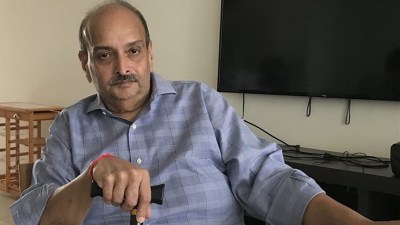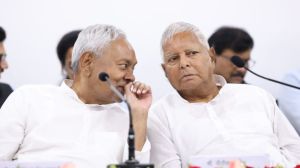DoT’s spectrum moves slow: Panel
Coming down heavily on the Department of Telecom (DoT), the Parliamentary Standing Committee on Information Technology has asked it to move ...

Coming down heavily on the Department of Telecom (DoT), the Parliamentary Standing Committee on Information Technology has asked it to move fast on resolving the spectrum tangle.
Let GSM and CDMA co-exist, give both factions spectrum based on international norms and let CDMA have a go at the 1,900 MHz band, says the Parliamentary Committee chaired by MM Pallam Raju in its latest report.
The Committee also says DoT must create conditions for GSM and CDMA operators to roll out 3G at one time. According to the report, DoT has been sitting on the telecom regulator Trai’s spectrum recommendations for too long, and it has discussed the release of spectrum with the defence ministry since Feb., but without results.
‘‘Even after 10 months, the Department has not arrived at any final view on the requirement of Defence and the vacation of spectrum including IMT-2000 band,’’ the report says. Decisions on spectrum need to be handled carefully, but ‘‘such issues cannot be kept pending forever,’’ it says.
According to Trai, the 1,900 MHz band will not be easy to free from Defence control, but the Parliamentary report wants DoT to start work on a ‘Defence Interest (spectrum) Zone’ soon. This will free 1,900 Mhz, which CDMA operators can use with the existing 800 MHz. The GSM faction can also keep its 900 MHz and 1800 MHz bands, says the report.
‘‘All efforts should be made to allot as much spectrum as the government can in the 800/1900 MHz for the CDMA operators and the 900/1800 MHz for the GSM operators for the expansion of telecom services,’’ it says, pointing out that the international precedent is to give 2×20 MHz spectrum to GSM operators and 2×14 to CDMA technology. In India, the highest allocation for GSM is 2×10 MHz, while that for CDMA is 2×5 MHz.
The Committee observes that despite competing claims on relative efficiencies of CDMA and GSM, spectrum allocated by DoT must keep in view ‘‘the need for eventual harmonisation of the spectrum allocation policy in accordance with the international norms.’’
On 3G, the Standing Committee says: ‘‘Efforts are being made for coordination of the 2.1 GHz band to enable 3G…. the 3G services are already available through the EDGE and EVDO.’’ Pointing out that EDGE and EVDO have been recognised by ITU as 3G, the report says, ‘‘Until the 2.1 GHz band is coordinated and spectrum and equipment made available in that band… the nation and users should not be denied access to 3G.’’
These services, it says, can be provided in the 800 MHz and 900 or 1,800 MHz bands, while the government ‘‘should create conditions and provide simultaneous opportunities to both GSM and CDMA operators for roll out of 3G services.



- 01
- 02
- 03
- 04
- 05




























